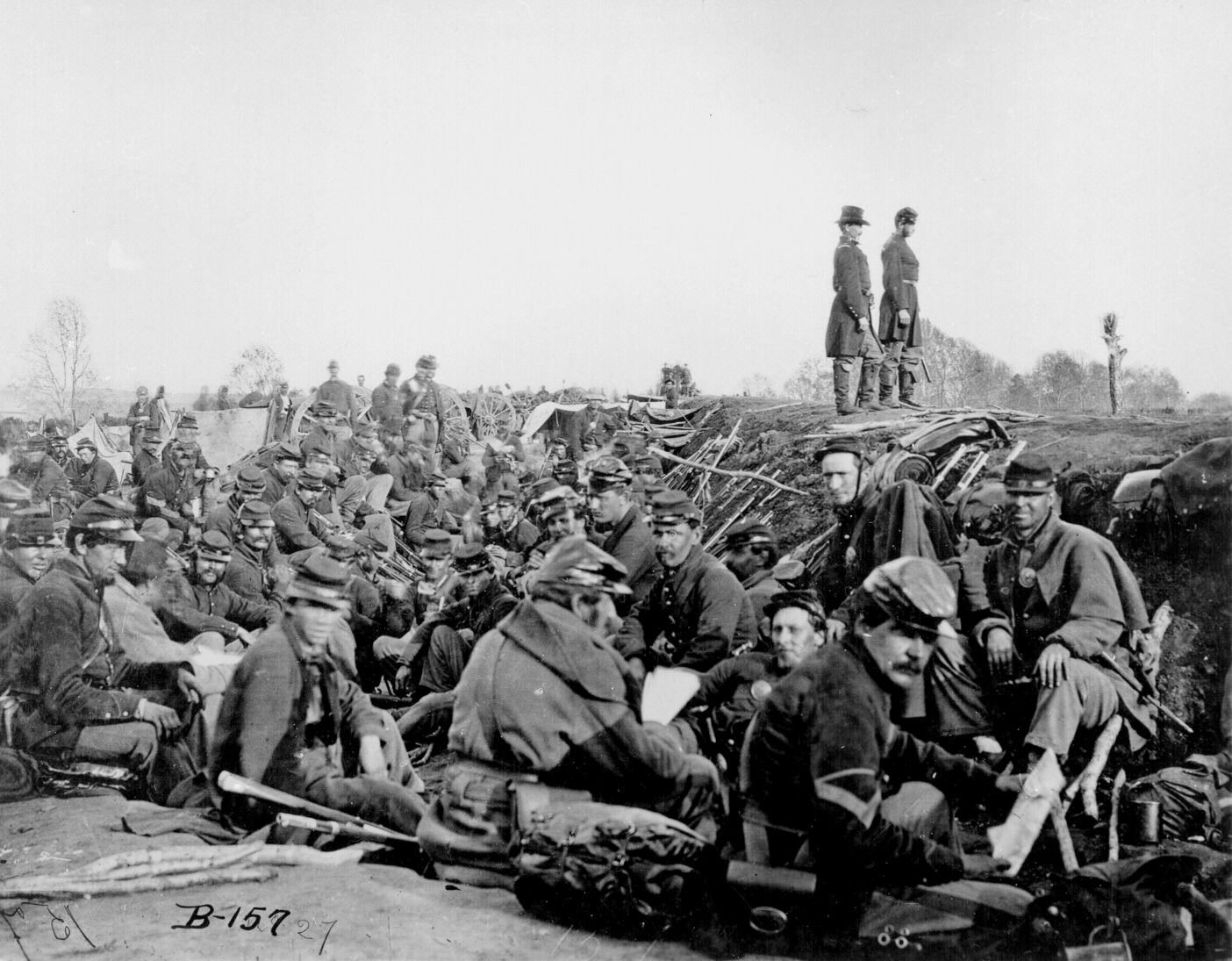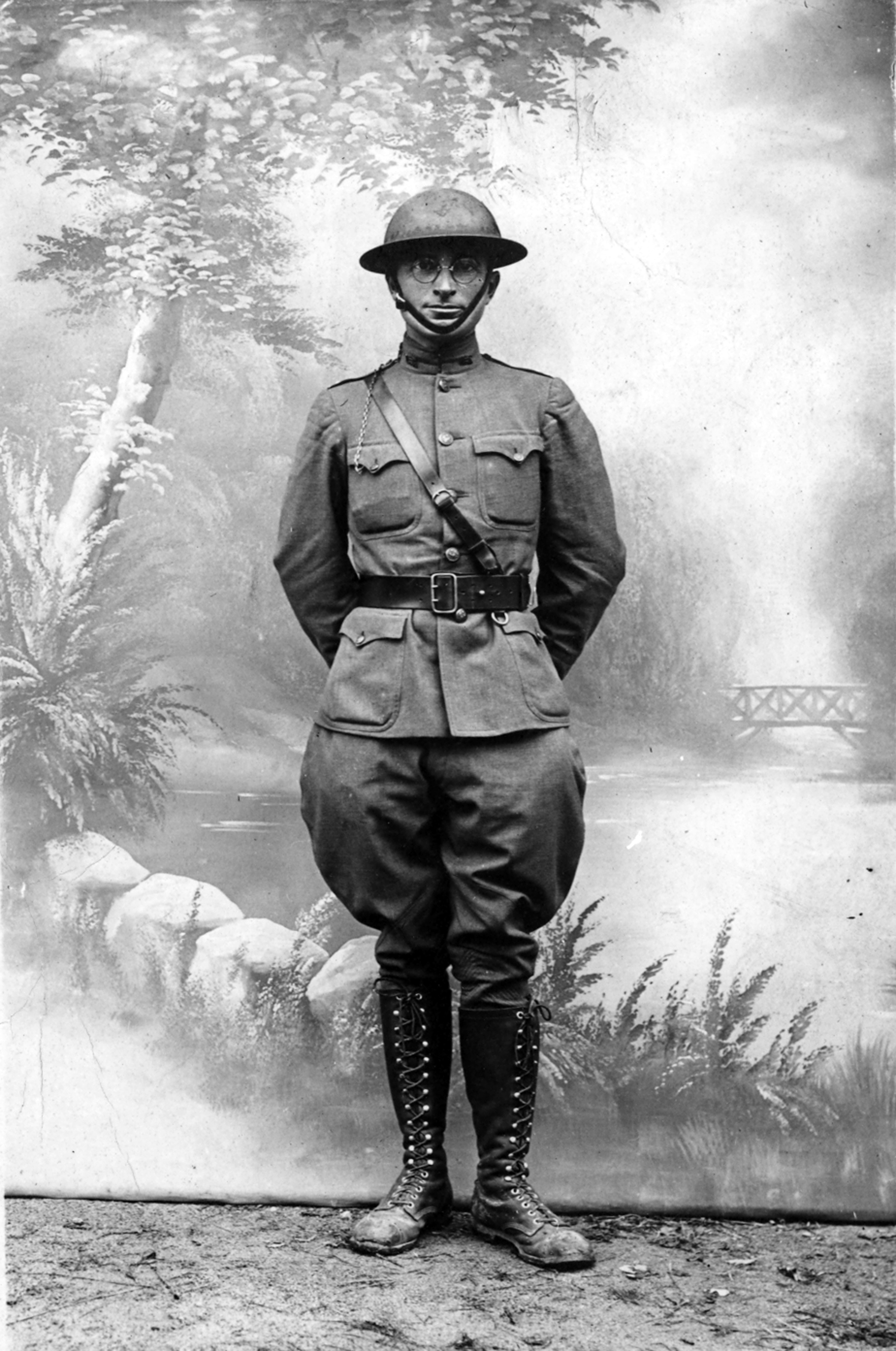|
Soldiers And Sailors Monument (Lancaster, Pennsylvania)
The Soldiers and Sailors Monument is a tall Gothic Revival memorial which stands in Penn Square in downtown Lancaster, Pennsylvania. It was dedicated on July 4, 1874, at its present site on the Northeast intersection of King and Queen Streets. The monument's original intention was to pay tribute to Lancastrian Union soldiers killed during the American Civil War. However, today the Soldiers and Sailors Monument also represents those who have served in subsequent American military conflicts. The 1744 Treaty of Lancaster between the British and Iroquois was signed in the old Lancaster courthouse which stood on the site of the monument at the time. The Soldiers and Sailors Monument also stands on the exact spot where the Second Continental Congress met during the American Revolutionary War on September 27, 1777, in the old Lancaster Courthouse. The courthouse was built in 1739 but later burned down in 1784, rebuilt 1787 to serve as State House from 1799 to 1812 and reverting ... [...More Info...] [...Related Items...] OR: [Wikipedia] [Google] [Baidu] |
Lancaster, Pennsylvania
Lancaster ( ) is a city in Lancaster County, Pennsylvania, United States, and its county seat. With a population of 58,039 at the 2020 United States census, 2020 census, it is the List of municipalities in Pennsylvania, eighth-most populous city in the state. It is a core city within South Central Pennsylvania, with 552,984 residents in the Lancaster Metropolitan statistical area, metropolitan area. Settled in the 1720s, Lancaster is one of the oldest inland cities in the US. It served as the capital of Pennsylvania from 1799 to 1812. The city's primary industries include healthcare, tourism, public administration, manufacturing, and both professional and semi-professional services. Lancaster is located southwest of Allentown, Pennsylvania, Allentown and west of Philadelphia and is a hub of Pennsylvania Dutch Country. History 18th century Originally called Hickory Town, Lancaster was renamed after the English city of Lancaster, Lancashire, Lancaster by native John Wright ... [...More Info...] [...Related Items...] OR: [Wikipedia] [Google] [Baidu] |
Confederate States Of America
The Confederate States of America (CSA), also known as the Confederate States (C.S.), the Confederacy, or Dixieland, was an List of historical unrecognized states and dependencies, unrecognized breakaway republic in the Southern United States from 1861 to 1865. It comprised eleven U.S. states that declared Secession in the United States, secession: South Carolina in the American Civil War, South Carolina, Mississippi in the American Civil War, Mississippi, Florida in the American Civil War, Florida, Alabama in the American Civil War, Alabama, Georgia in the American Civil War, Georgia, Louisiana in the American Civil War, Louisiana, Texas in the American Civil War, Texas, Virginia in the American Civil War, Virginia, Arkansas in the American Civil War, Arkansas, Tennessee in the American Civil War, Tennessee, and North Carolina in the American Civil War, North Carolina. These states fought against the United States during the American Civil War. With Abraham Lincoln's 1860 Un ... [...More Info...] [...Related Items...] OR: [Wikipedia] [Google] [Baidu] |
Military History Of African Americans
The military history of African Americans spans African-American history, the history of the United States and the military history of the United States from the slavery in the United States, arrival of the first enslaved Africans during the colonial history of the United States to the History of the United States (2008–present), present day. African Americans have participated in every List of wars involving the United States, war which has been fought either by or within the United States, including the American Revolutionary War, Revolutionary War, the War of 1812, the Mexican–American War, the American Civil War, Civil War, the Spanish–American War, World War I, World War II, the Korean War, the Vietnam War, the Gulf War, the War in Afghanistan (2001–2021), War in Afghanistan, and the Iraq War. American Revolution African Americans, both as Slavery in the colonial United States, slaves and Free black, freemen, served on both sides of the Revolutionary War. Gary ... [...More Info...] [...Related Items...] OR: [Wikipedia] [Google] [Baidu] |
Bronze
Bronze is an alloy consisting primarily of copper, commonly with about 12–12.5% tin and often with the addition of other metals (including aluminium, manganese, nickel, or zinc) and sometimes non-metals (such as phosphorus) or metalloids (such as arsenic or silicon). These additions produce a range of alloys some of which are harder than copper alone or have other useful properties, such as strength, ductility, or machinability. The archaeological period during which bronze was the hardest metal in widespread use is known as the Bronze Age. The beginning of the Bronze Age in western Eurasia is conventionally dated to the mid-4th millennium BCE (~3500 BCE), and to the early 2nd millennium BCE in China; elsewhere it gradually spread across regions. The Bronze Age was followed by the Iron Age, which started about 1300 BCE and reaching most of Eurasia by about 500 BCE, although bronze continued to be much more widely used than it is in modern times. Because historica ... [...More Info...] [...Related Items...] OR: [Wikipedia] [Google] [Baidu] |
Battle Of The Wilderness
The Battle of the Wilderness was fought on May 5–7, 1864, during the American Civil War. It was the first battle of Lieutenant general (United States), Lieutenant General Ulysses S. Grant's 1864 Virginia Overland Campaign against General (CSA), General Robert E. Lee and the Confederate States Army, Confederate Army of Northern Virginia. The fighting occurred in a wooded area near Locust Grove, Orange County, Virginia, Locust Grove, Virginia, about west of Fredericksburg, Virginia, Fredericksburg. Both armies suffered heavy casualties, nearly 29,000 in total, a harbinger of a Attrition warfare, war of attrition by Grant against Lee's army and, eventually, against the Confederate capital, Richmond in the American Civil War, Richmond, Virginia. The battle was Military tactics, tactically inconclusive, as Grant disengaged and then continued his offensive. Grant attempted to move quickly through the dense underbrush of the The Wilderness Forest, Wilderness of Spotsylvania, but L ... [...More Info...] [...Related Items...] OR: [Wikipedia] [Google] [Baidu] |
Siege Of Petersburg
The Richmond–Petersburg campaign was a series of battles around Petersburg, Virginia, fought from June 9, 1864, to March 25, 1865, during the American Civil War. Although it is more popularly known as the siege of Petersburg, it was not a classic military siege, in which a city is Encirclement, encircled with fortifications blocking all routes of ingress and egress, nor was it strictly limited to actions against Petersburg. The campaign consisted of nine months of trench warfare in which Union Army, Union forces commanded by Lieutenant general (United States), Lieutenant General Ulysses S. Grant assaulted Petersburg unsuccessfully and then constructed trench lines that eventually extended over from the eastern outskirts of Richmond, Virginia, to around the eastern and southern outskirts of Petersburg. Petersburg was crucial to the supply of Confederate States Army, Confederate General (CSA), General Robert E. Lee's army and the Confederate States of America, Confederate capi ... [...More Info...] [...Related Items...] OR: [Wikipedia] [Google] [Baidu] |
Battle Of Malvern Hill
The Battle of Malvern Hill, also known as the Battle of Poindexter's Farm, was fought on July 1, 1862, between the Confederate Army of Northern Virginia, led by Gen. Robert E. Lee, and the Union Army of the Potomac under Maj. Gen. George B. McClellan. It was the final battle of the Seven Days Battles during the American Civil War, taking place on a elevation of land known as Malvern Hill, near the Confederate capital of Richmond, Virginia and just one mile (1.6 km) from the James River. Including inactive reserves, more than fifty thousand soldiers from each side took part, using more than two hundred pieces of artillery and three warships. The Seven Days Battles were the climax of the Peninsula Campaign, during which McClellan's Army of the Potomac sailed around the Confederate lines, landed at the tip of the Virginia Peninsula, southeast of Richmond, and struck inland towards the Confederate capital. Confederate general Joseph E. Johnston fended off McClellan's rep ... [...More Info...] [...Related Items...] OR: [Wikipedia] [Google] [Baidu] |
Battle Of Gettysburg
The Battle of Gettysburg () was a three-day battle in the American Civil War, which was fought between the Union and Confederate armies between July 1 and July 3, 1863, in and around Gettysburg, Pennsylvania. The battle, won by the Union, is widely considered the Civil War's turning point, leading to an ultimate victory of the Union and the preservation of the nation. The Battle of Gettysburg was the bloodiest battle of both the Civil War and of any battle in American military history, claiming over 50,000 combined casualties. Union Major General George Meade's Army of the Potomac defeated attacks by Confederate General Robert E. Lee's Army of Northern Virginia, halting Lee's invasion of the North and forcing his retreat.A prior attempt by Lee to invade the north culminated in the Battle of Antietam and 23,000 casualties, the most of any single day Civil War.Rawley, p. 147; Sauers, p. 827; Gallagher, ''Lee and His Army'', p. 83; McPherson, p. 665; Eicher, p. 550. Gal ... [...More Info...] [...Related Items...] OR: [Wikipedia] [Google] [Baidu] |
Battle Of Chickamauga
The Battle of Chickamauga, fought on September 18–20, 1863, between the United States Army and Confederate States Army, Confederate forces in the American Civil War, marked the end of a U.S. Army offensive, the Chickamauga Campaign, in southeastern Tennessee and northwestern Georgia (U.S. state), Georgia. It was the first major battle of the war fought in Georgia and the most significant US defeat in the Western Theater of the American Civil War, Western Theater, and it involved the second-highest number of casualties after the Battle of Gettysburg. The battle was fought between the U.S. Army's Army of the Cumberland under major general (United States), Maj. Gen. William Rosecrans and the Confederate States Army, Confederate Army of Tennessee under General (CSA), Gen. Braxton Bragg, and was named for Chickamauga Creek. The West Chickamauga Creek meanders near and forms the southeast boundary of the battle area and the park in northwest Georgia. (The South Chickamauga ultimatel ... [...More Info...] [...Related Items...] OR: [Wikipedia] [Google] [Baidu] |
Battle Of Antietam
The Battle of Antietam ( ), also called the Battle of Sharpsburg, particularly in the Southern United States, took place during the American Civil War on September 17, 1862, between Confederate General Robert E. Lee's Army of Northern Virginia and Union Major General George B. McClellan's Army of the Potomac near Sharpsburg, Maryland, and Antietam Creek. Part of the Maryland Campaign, it was the first field army–level engagement in the Eastern Theater of the American Civil War to take place on Union soil. It remains the bloodiest day in American history, with a tally of 22,727 dead, wounded, or missing on both sides. Although the Union Army suffered heavier casualties than the Confederates, the battle was a major turning point in the Union's favor. After pursuing Confederate General Robert E. Lee into Maryland, Major General George B. McClellan of the Union Army launched attacks against Lee's army who were in defensive positions behind Antietam Creek. At dawn on Se ... [...More Info...] [...Related Items...] OR: [Wikipedia] [Google] [Baidu] |
Cavalry (United States)
The United States Cavalry, or U.S. Cavalry, was the designation of the mounted force of the United States Army. The United States Cavalry was formally created by an act of Congress on 3 August 1861 and ceased as a distinct Army branch in 1942.Price (1883) p. 103, 104 The name "cavalry" continues to be used as a designation for various specific United States Army formations and functions. This branch, alongside the Infantry and Artillery branches, was formerly considered to be one of the "classic" combat arms branches (defined as those branches of the army with the primary mission of engaging in armed combat with an enemy force). From the United States Declaration of Independence and the American War of Independence onwards, mounted troops were raised ad-hoc by the United States as emergencies presented themselves and were disbanded as soon as these had passed. In 1833, Congress created the 1st U.S. Dragoons, followed by the 2nd U.S. Dragoons and the U.S. Mounted Riflemen 1836 ... [...More Info...] [...Related Items...] OR: [Wikipedia] [Google] [Baidu] |
Field Artillery Branch (United States)
The Field Artillery Branch is the field artillery branch of the United States Army. This branch, alongside the infantry and cavalry branches, was formerly considered to be one of the "classic" combat arms branches (defined as those branches of the army with the primary mission of engaging in armed combat with an enemy force), but is today included within the "Maneuver, Fires and Effects" (MFE) classification, in accordance with current U.S. Army organizational doctrine. Historical background The U.S. Army Field Artillery branch traces its origins to 17 November 1775 when the Continental Congress, unanimously elected Henry Knox "Colonel of the Regiment of Artillery". The regiment formally entered service on 1 January 1776. During the 19th century a total of seven Artillery regiments were formed which contained a mixture of "heavy" artillery companies and "light" artillery batteries. The light artillery batteries took the role of field artillery although they did not use that des ... [...More Info...] [...Related Items...] OR: [Wikipedia] [Google] [Baidu] |








